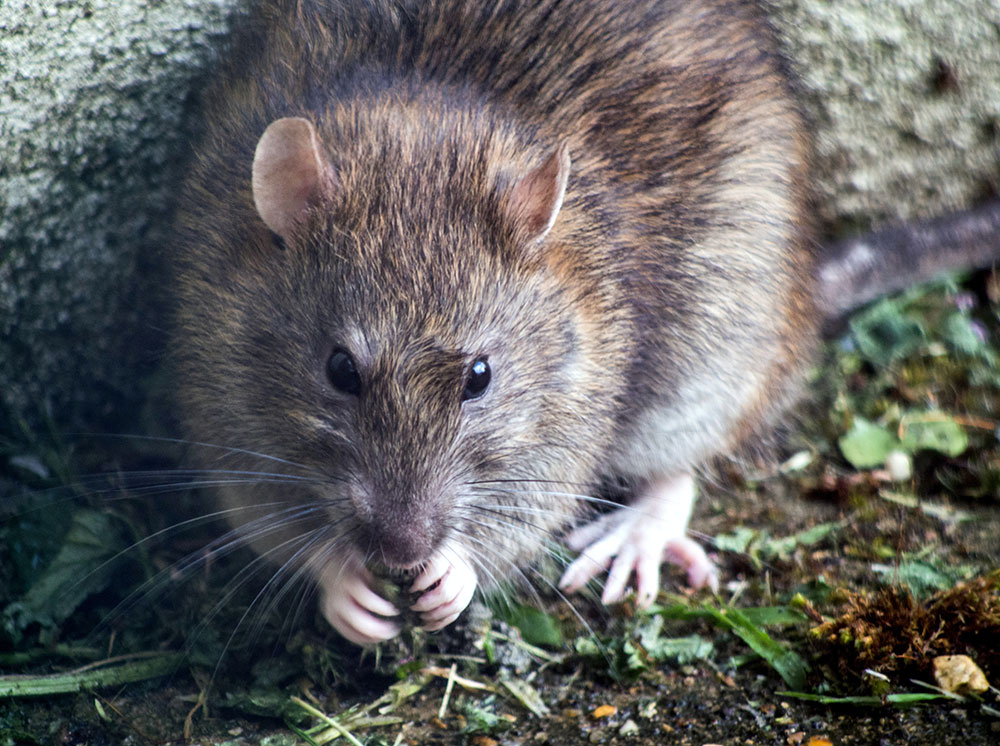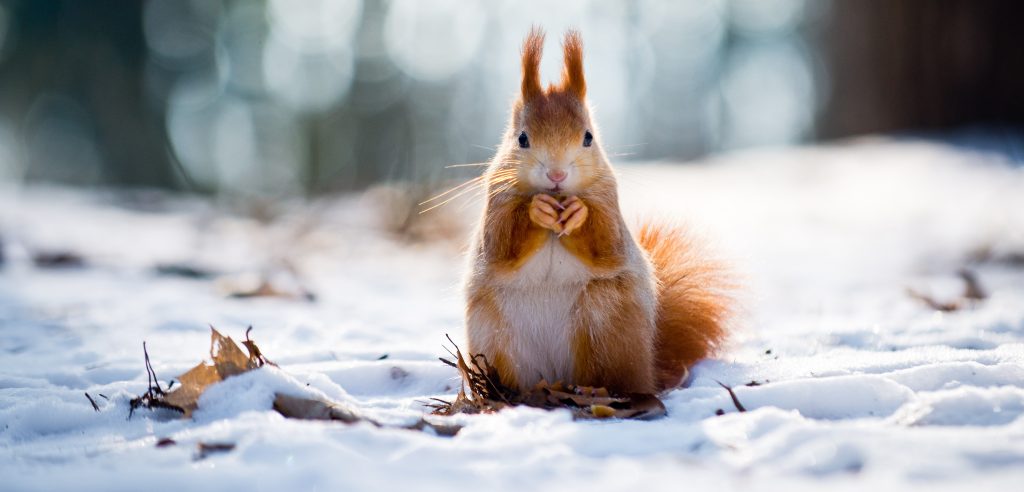Destructive and troublesome, rats traditionally live near humans. This puts rats in the prime position to invade homes and other buildings, where ample availability of food and nesting sites provides the rodents with everything they need to survive.
The pests gain entry to homes in a variety of ways. They can fit through any opening larger than 1/2 an inch in diameter, which means that small holes, gaps in doorways, and wall vents often serve as common entry points for the agile rodents.
Rats are also proficient swimmers capable of traveling through sewer lines and entering buildings by emerging from toilets and open drains.
Don’t waste your hard-earned money on DIY trapping methods that won’t solve your problem. Call in the team of experts at Trutech for rat removal and rat control services that an effective and permanent solution. Hiring the professionals at Critter Control Canada will take care of your problem in an environmentally sensitive way. Our wildlife specialists have the tools and knowledge necessary to prevent the spread of diseases from rats that enter your house or yard.
Appearance
Most rats weigh between 5 ounces and a pound, have grayish fur, and possess scaly, hairless tails. They are larger than mice and can reach nearly a foot in length. As is typical of rodents, rats have protruding incisors, whiskers, and small eyes.
Rat Diet
Rats are omnivorous foragers. The rodents commonly dig through trash bins and landfills in residential areas for easy meals. Rats pilfer animal food meant for livestock or cats and dogs. Other favorite meals include snakes, frogs, and even other rodents like mice.
Rat Habitat
Rats can survive in almost any habitat. Desirable habitats provide water and food sources in steady, surplus supplies. As such, rats maintain a cosmopolitan distribution and are regularly found wherever people live.
Residential Rat Problems
When rats enter homes, they prefer to stay out of sight in undisturbed areas. Rats climb walls, run across power lines, swim up through pipes, and squeeze in through small openings in the exterior of buildings to gain entry.
Identifying a rat infestation, however, is easy, especially as the rodents increase in number. Rats move around a lot and individuals should listen for the sounds of scurrying in attics, false ceilings, and wall voids. These noises intensify at nighttime, as rats are nocturnal and become most active after dusk.
Additionally, homeowners should look for rat droppings around sources of food, like pantries, smudge marks on walls left by the greasy, oily fur of rats, and gnawing damage.
Finally, residents may spot adult rats in sheltered locations such as storage boxes, seldom-used drawers, and stacks of firewood.
Signs of Rats in the House
Rats in the house can create serious problems for both people and property. Their droppings have been known to contain disease-causing pathogens, while their constant gnawing causes property damage and can even start electrical fires. Rats also get into and contaminate food intended for humans and pets. Due to the health risks created by rat infestations, professional pest control is often the best way to achieve complete rat removal safely and effectively.
There are a number of ways to discover an infestation such as:
- Droppings – Fresh rat poop is black, shiny, and about the size of a raisin.
- Rat hair – Shed fur may snag on rough wood or inside pantries and cabinets.
- Smears and smudges – Oil from rat fur transfers to surfaces as the pests move.
- Holes – Rats chew ragged openings in food packages and containers.
- Noises – Homeowners may hear scratching, squeaking, and gnawing sounds coming from attics, crawl spaces, or walls.
- Odor – Rodents have a musky scent that gets stronger as populations grow.
Where Do Rats Live
- Attics
- Walls
- Under porches
- In the yard
Rats in the Attic
One of the main reasons rats invade homes is for shelter from cold weather. As attics are some of the warmest spaces in houses, it’s no wonder rodents, like Norway and roof rats, enjoy constructing nests in these secluded top stories. The rodents gain entry through vents, gaps in roof eaves, and through holes in building exteriors. Roof rats are especially talented climbers and easily use tall trees and wires running to and from roofs to gain access.
Signs of Rat in the Attic
Homeowners may be alerted to the presence of rats in the attic by sounds, sights, and smells. Usually the most apparent signs of infestation are the scratching and scurrying sounds these rodents make. As rats are nocturnal, they are noisiest when individuals are settling in for a night of rest. Additionally, home residents may notice visual cues such as rat droppings, teeth marks in food containers, and even tracks. Finally, the musky smell of rat presence and malodorous collections of droppings and urine are sure indications of rat infestations in the attic.
Rat Damage in Attics
Residents of homes are put at risk when there are rats in the attic. As the rodents must constantly gnaw to keep the length of their teeth manageable, they can damage the structural integrity of buildings by chewing through wooden support beams. Rats also target electrical wires and heighten the possibility of fire.
Rats in the Walls
Rats are particularly fond of settling in the dark, secluded areas between walls once they’re inside homes as these spaces have lots of insulation to tear apart and use for bedding as well as wooden boards to gnaw on. At night, these pests venture out into the body of houses to gather food from pantries, countertops, and garbage cans before retreating back to their nests in the walls.
Signs of Rats in the Walls
To detect the presence of rats in walls, residents should remain alert for rat droppings around homes, oily smudge marks, and gnawed holes in walls and food containers. Droppings are long, cylindrical pellets typically dark brown in color that can be found wherever rats frequent. Smudge marks appear as greasy patches on floors and walls as a result of the pests’ dirty fur rubbing up against a surface. Finally, rats use their large front teeth to chew access holes into walls and gnaw open food containers. These openings are ragged around the edges and may only be as large as a half an inch in diameter.
Rat Noises and Smells
Homeowners should also listen for rustling, clawing, and squeaking sounds coming from inside wall cavities. These sounds intensify in the evenings when the rodents are preparing for a night of activity. Another sure sign of a rat infestation is the pungent smell of urine concentrated within the walls where the pests nest.
Rats in the Yard

Backyards make attractive nesting prospects for rats because they offer plentiful access to both food and shelter. The pests are opportunistic feeders and will not hesitate to pilfer food from gardens, outdoor trash cans, and pet feed that’s been left out.
Furthermore, as the pests are agile runners, jumpers, climbers, and swimmers, they navigate residential lawns with ease. Popular backyard nesting sites include brush piles, overgrown shrubberies, abandoned squirrel nests in trees, unused sheds, and garbage piles.
Since they routinely travel up to 300 feet for food, rats outside your house still pose a risk. Rats in the yard, under your deck, or in trees will eventually venture into nearby homes in search of garbage, animal feed, and foodstuffs.
Rats in Trees
As agile climbers, rats are easily able to infest trees. The pests are opportunistic feeders that regularly eat insects and fruits, which makes trees suitable nesting sites as they offer these food sources in abundance. Capable of leaping both horizontally and vertically, rats maneuver to the tops of trees by climbing walls and power lines. Furthermore, the pests utilize the high elevation afforded to them by vegetation to gain access to upper levels of homes and buildings. Entrance into attic and ceiling spaces encourage rats to build nests in trees.
Signs of Rats in Trees
Property owners may catch glances of the pests scurrying along branches, telephone wires, and the ground, especially at dusk when rats become active. Well-traversed pathways through undergrowth along with moderately sized droppings serve as additional indicators of rats in trees. Finally, individuals may notice nests made of varying materials, like twigs, cotton, and leaves, tucked away in trees, smudge marks along the exterior of homes, and gnawed branches.
Finding evidence of rats in lawns and gardens often means the pests have nests in outbuildings or under porches and decks. Signs of rats outdoors include:
- Runways – Rats will travel repeatedly to food sources and leave worn trails in grass or mud.
- Tracks – Footprints left behind in dust or moist earth can help residents find rodent nests.
- Burrows – Holes about four inches wide leading into narrow tunnels are a specific sign of Norway rats.
Rats under Porches and Decks
Decks with their overhead cover and seclusion make the perfect nesting sites. Since rats can fit through small openings, they easily worm their way underneath decks where they enjoy relative safety and comfort. Furthermore, rats under decks easily find entrance into homes.
Signs of Rats Under Decks
Since rats are primarily active at night, infestations usually go undetected for some time. However, knowing what rat signs to look for allows property owners to notice the presence of rats under decks sooner. Telltale signs of rat infestations include scratching and squeaking noises, the presence and smell of urine and excrement, and remnants of nesting materials like ripped up insulation.
A clever way to detect the presence of rats under decks is to place newspaper over the openings. After a few days, if the paper is ripped or gone, property owners should assume they’re dealing with an infestation.
The Problems with DIY Rat Control
Rats can cause many problems for homeowners. Their habitual chewing can damage cables, wires, water lines, pool equipment, and vehicle engines. Rats also produce large amounts of disease-carrying waste and build four-foot-wide nests in cars and under homes. There is more than one DIY rat repellent, though none are completely effective.
Popular rat control include:
- Putting out mothballs
- Sprinkling cayenne pepper in gardens
- Enclosing plants with hardware cloth
There are several issues with these approaches. Mothballs only last a short time and can be toxic to pets and small children. The other two pack rat deterrents may show some results outdoors, but don’t address indoor pests.
Why Professional Rat Control is Necessary
It is vital to control pack rat populations because these rodents are highly fertile. One female is able to give birth to two babies per month. After two months, those offspring have developed enough to start having young of their own.
While simple prevention methods may work in the short term, rats travel in large numbers and are quick to overcome obstacles. The pests grow used to audible scare tactics quickly, although loud noises may drive them away temporarily. Rats also become resistant to repellants and toxins. Traps are the most effective method of dealing with Norway rats. However, knowing how to properly select, place, and bait a trap can mean the difference between successful removal and continued problems.


